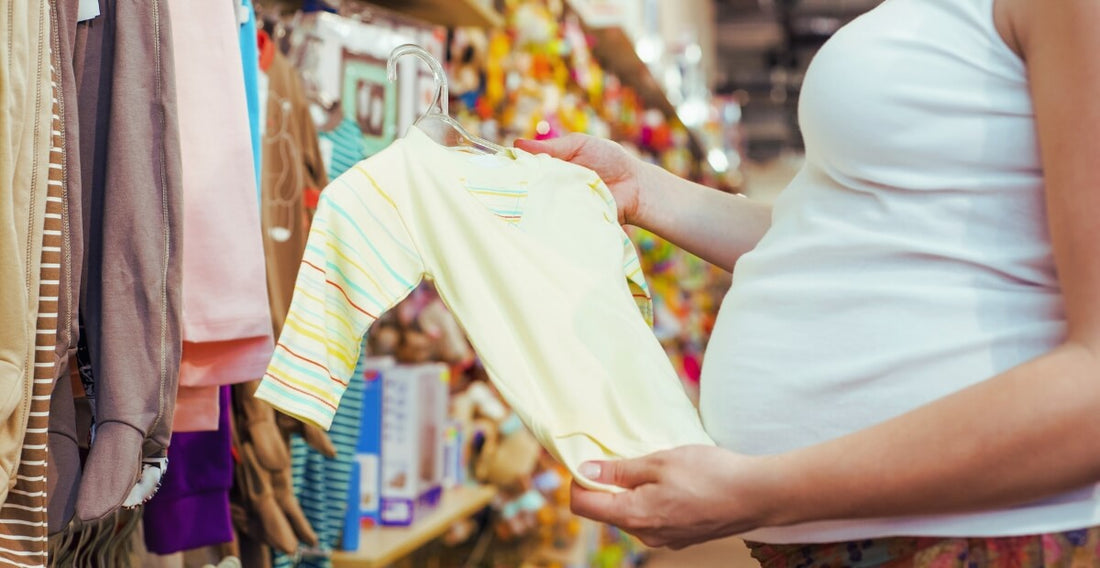
What’s Really in Your Child’s Clothes?
Share
The Hidden Costs of Conventional Babywear
As parents, we make thoughtful choices every day—from the food our children eat to the lotion we gently rub into their skin. But what about the clothing they wear, day in and day out? If you’ve ever picked up a cute onesie at a big-box store and thought, "This looks fine, right?"—you’re not alone. But behind those low prices and trendy designs, there’s often more than meets the eye.
At Young Eden, we understand how important it is to know what’s really going against your child’s skin. So let’s pull back the curtain on conventional babywear—and explore why choosing organic and sustainable clothing isn’t just a trend, it’s a conscious parenting decision.
The Truth About Conventional Babywear
Most children’s clothing on the market is made from non-organic cotton or synthetic fibers like polyester or nylon, types of plastic that are often treated with a cocktail of harsh chemicals. We’re talking:
-
Pesticides used during cotton farming (many of which are linked to hormone disruption and skin irritation)
-
Chemical dyes that can contain heavy metals and formaldehyde
-
Flame retardants and wrinkle-resistant treatments
-
Microplastics from synthetic fabrics that shed in the wash and enter our ecosystems
The most disappointing part? These clothes are often labeled as "safe" or "gentle"—but rarely offer true transparency. You might think that if you’re shopping from high end brands or designer babywear that you’re purchasing better quality fabrics – but often even the most luxurious apparel brands are serving up plastic in your little one’s clothes. This is why it’s important you check the materials, specifications or ingredient labels before you buy.
Why It Matters—for Your Child and the Planet
Your baby’s skin is thinner and more absorbent than yours. That means any residual chemicals from clothing can be more easily absorbed into their little bodies. Common side effects include:
-
Skin irritation and rashes
-
Exacerbated eczema and sensitivities
-
Respiratory concerns from inhaled fibers or chemical residues
On a bigger scale, non-organic production contributes to:
-
Soil degradation and polluted waterways
-
Unethical labor conditions
-
Massive textile waste—because cheaply made clothes rarely last beyond a season
So… What’s the Organic Difference?
At Young Eden, we simplify shopping for organic and sustainable children’s clothing by putting all of the best brands in one place for families. Our curated collections of baby, toddler and kid clothes are made with certified organic cotton, dyed with non-toxic, eco-conscious methods, and made under ethical working conditions.
The difference?
-
No toxic chemicals at any stage of production
-
Safe, breathable fabrics that support sensitive skin
-
Planet-first practices, including low-waste design and biodegradable packaging
-
Clothing that’s made to last, not just look cute for a photo
We’re not here to support fast fashion polluting the planet—we’re here to offer timeless, toxin-free pieces you can feel good about, from the first wear to the last hand-me-down.
How to Spot the Difference (Even When Brands Say They're "Eco")
Not all “natural” or “eco-friendly” labels tell the full story. Here’s what to watch out for:
✅ Look for certifications like GOTS (Global Organic Textile Standard) and OEKO-TEX®
⚠️ Be cautious of vague claims like "sustainable" or "green" with no clear sourcing info
❌ Avoid materials like polyester, conventional cotton, or rayon unless otherwise specified
✅ Check brand transparency—do they share where and how their products are made?
Many larger brands, even those marketing themselves as eco-conscious, still rely heavily on synthetic blends, mass production, and unsustainable practices. It’s okay to ask questions. In fact—we encourage it.
Choosing Better, Together
Our mission is simple: to curate ultra soft, sustainable, and beautiful essentials that honor your child’s health and our Earth’s future.
Because the clothes your child wears shouldn’t come at the cost of their well-being—or the planet they’ll grow up in.
Explore our carefully curated collections of organic baby and kid fashion and experience the difference for yourself. 🌱
